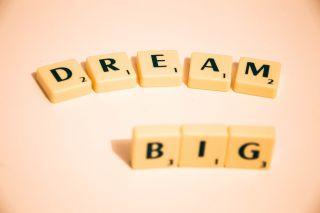PSYCHOANALYSIS-
The Coronation on the Couch.
The psychoanalysis of the coronation: elites, rituals, and why we need to watch.
Reviewed by Jessica Schrader
KEY POINTS-
Psychoanalysis has been applied to why some societies have a monarchy.
The psychological defence mechanism of "splitting" may explain why a democracy needs a royal family in order to survive.
All rituals, like coronations, serve to provide a sense of control.
Uncovering the hidden psychological meanings that lie behind the often mysterious, elaborate, pomp and circumstance of the coronation was originally attempted by the first English-speaking practitioner of psychoanalysis, Dr. Ernest Jones.
This analysis suggested that democracies, paradoxically, need royal families in order to survive in the longest term. This contention has ominous implications for republics like the USA. One interpretation of his argument could relate to the violent invasion on Capitol Hill that erupted in the USA following an election result that some refused to accept—a kind of political upheaval that has not flared up during the modern era in the U.K.
Ernest Jones was not just a lifelong friend of the founder of psychoanalysis, Sigmund Freud, but he was also his official biographer. The Welsh neurologist and psychoanalyst became perhaps the most influential figure in the establishment of this particular form of therapy outside of continental Europe.
Jones, who died in 1958, published an essay in 1936 entitled "The Psychology of Constitutional Monarchy," which applied psychoanalysis to the royal family.
The disciple of Freud argued that once you understand the true role of kings and queens in our collective unconscious, you will begin to grasp that royalty and rituals, such as coronations, are hugely politically and emotionally significant.
The unexpected twist in the argument from Ernest Jones is that the monarchy—despite being associated with dictatorship—in fact, in a democracy, provides a necessary psychological stabilising framework. A society that would otherwise be tormented by division, so remains united, without falling into anarchy and civil unrest.
The electorate inevitably experience ambivalence or doubt over figures of authority. The benefits of being ruled are that we feel protected, and are given a direction imposed by a ruler. Yet we all also resent being ordered about, aggrieved by restrictions placed upon our freedom.
This means any form of governing can’t escape from a basic yet serious predicament: How do you get any unruly electorate to accept the sacrifices involved in being ruled, without the inevitable resentment spilling out into disobedience and law-breaking?
In a famous essay of 1937, “Analysis Terminable and Interminable,'' Freud asserts that “government, education, and analysis” constitute three impossible professions, the results of which are doomed to “failure."
However, Jones argues, the British constitutional arrangement gets around this fundamental problem by resolving its governing body into two separate elements. On the one side stands Parliament, with its rival factions and its political disputes. This receives the brunt of the electorate’s hostility and resentment over being governed.
But on the other side stands the crown, symbolizing ancient tradition, continuity, and the wider social and political order, and which therefore basks in the glow of respect and admiration.
Ernest Jones was invoking the psychological defence mechanism of "splitting," which helps us deal with unresolved conflict. The royal family and the coronation assist with "splitting." Splitting was first described by Freud, where he referred to a mental process by which two separate and contradictory versions of reality could co-exist.
Splitting as a defence mechanism allows us to handle a contradiction, the presence of a beloved royal family at the top, and allows us to accept a hated government.
Dr. Nassir Ghaemi, professor of psychiatry at Tufts Medical Center in Boston and clinical lecturer at Harvard Medical School, recently echoed this argument when he speculated that one reason the violent storming of Capitol Hill occurred in the U.S., with no equivalent event in the monarchist U.K., may be linked to the absence of a unifying constitutional figure, in the form of a king, in North America.
Precisely because you can’t vote a king or queen out, they hang around for much longer periods than voters tolerate presidents or prime ministers, so a unique constitutional continuity is provided by someone like Queen Elizabeth, who reigned for 70 years. The next longest reign in U.K. history is that of Queen Victoria (63 years), who, intriguingly, given Ernest Jones’ and Nassir Ghaemi’s argument, presided over the establishment of the largest empire the world has ever seen.
Professor Ghaemi’s article, entitled "Society Without the Mother—Lessons from Queen Elizabeth," argues that North Americans are raised on the assumption that a democratic republic is the best form of government, but one clear defect is that leaders change every few years. There is no consistent father or mother figure to pull a nation together. We all need an upwardly directed relationship with someone we look up to who helps us repress our child-like impulsive urges to wreak havoc, and throw our toys out of the pram, when we don’t get our way.
Nassir Ghaemi argues that while the U.S. has a written constitution, which is supposed to unify it, there is no living long-term unifying leader; the U.K. has a uniting parental figure in the monarch, and so survives with no written document.
Does a king or a queen help stand against the violence of the mob?
The German psychoanalyst, Alexander Mitscherlich, published an influential 1963 book explaining the Nazi experience, titled Society without the Father.
In a pure democracy, there is no father or parental figure; in an autocracy, the father has too much power; and a constitutional monarchy gets it just right.
But, many of us instinctively object to kings and coronations because it seems we are submissive bystanders merely witnessing an elite celebrating its dominance. Yet we also seem to crave an upwardly-directed relationship, perhaps an overhang of our childhood experience of needing parents to look up to.
By definition, elites conceal what it is like to be in the inner circle, so we become driven by a need to pry into what is forbidden.
A coronation fills our psychological need for a glimpse of the inner sanctum of the elite. This is the same need that is being filled by the voyeur who is beset by a conviction that no matter how much they peep, something is forever being hidden from them.
This may be the same emotional need that drives the enormous popularity of TV shows like The Kardashians or Succession.
Unlike those series, the royal family is a serial that’s been running for centuries, and the rituals of the coronation remind us of a sense of continuity we all crave.
Because we all want to know where we came from.
Even if we don’t know what the future holds, all rituals, like coronations, serve to provide a sense of control, which is helpful when everything around us begins to feel out of control.
This is exactly why sufferers of anxiety disorders like obsessive-compulsive disorder (OCD) perform rituals.
If watching the coronation stirs up strong emotions, yet also, strangely, calms you down, now you know why.
PSYCHOANALYSIS-
The Coronation on the Couch.
The psychoanalysis of the coronation: elites, rituals, and why we need to watch.
Reviewed by Jessica Schrader
KEY POINTS-
Psychoanalysis has been applied to why some societies have a monarchy.
The psychological defence mechanism of "splitting" may explain why a democracy needs a royal family in order to survive.
All rituals, like coronations, serve to provide a sense of control.
Uncovering the hidden psychological meanings that lie behind the often mysterious, elaborate, pomp and circumstance of the coronation was originally attempted by the first English-speaking practitioner of psychoanalysis, Dr. Ernest Jones.
This analysis suggested that democracies, paradoxically, need royal families in order to survive in the longest term. This contention has ominous implications for republics like the USA. One interpretation of his argument could relate to the violent invasion on Capitol Hill that erupted in the USA following an election result that some refused to accept—a kind of political upheaval that has not flared up during the modern era in the U.K.
Ernest Jones was not just a lifelong friend of the founder of psychoanalysis, Sigmund Freud, but he was also his official biographer. The Welsh neurologist and psychoanalyst became perhaps the most influential figure in the establishment of this particular form of therapy outside of continental Europe.
Jones, who died in 1958, published an essay in 1936 entitled "The Psychology of Constitutional Monarchy," which applied psychoanalysis to the royal family.
The disciple of Freud argued that once you understand the true role of kings and queens in our collective unconscious, you will begin to grasp that royalty and rituals, such as coronations, are hugely politically and emotionally significant.
The unexpected twist in the argument from Ernest Jones is that the monarchy—despite being associated with dictatorship—in fact, in a democracy, provides a necessary psychological stabilising framework. A society that would otherwise be tormented by division, so remains united, without falling into anarchy and civil unrest.
The electorate inevitably experience ambivalence or doubt over figures of authority. The benefits of being ruled are that we feel protected, and are given a direction imposed by a ruler. Yet we all also resent being ordered about, aggrieved by restrictions placed upon our freedom.
This means any form of governing can’t escape from a basic yet serious predicament: How do you get any unruly electorate to accept the sacrifices involved in being ruled, without the inevitable resentment spilling out into disobedience and law-breaking?
In a famous essay of 1937, “Analysis Terminable and Interminable,'' Freud asserts that “government, education, and analysis” constitute three impossible professions, the results of which are doomed to “failure."
However, Jones argues, the British constitutional arrangement gets around this fundamental problem by resolving its governing body into two separate elements. On the one side stands Parliament, with its rival factions and its political disputes. This receives the brunt of the electorate’s hostility and resentment over being governed.
But on the other side stands the crown, symbolizing ancient tradition, continuity, and the wider social and political order, and which therefore basks in the glow of respect and admiration.
Ernest Jones was invoking the psychological defence mechanism of "splitting," which helps us deal with unresolved conflict. The royal family and the coronation assist with "splitting." Splitting was first described by Freud, where he referred to a mental process by which two separate and contradictory versions of reality could co-exist.
Splitting as a defence mechanism allows us to handle a contradiction, the presence of a beloved royal family at the top, and allows us to accept a hated government.
Dr. Nassir Ghaemi, professor of psychiatry at Tufts Medical Center in Boston and clinical lecturer at Harvard Medical School, recently echoed this argument when he speculated that one reason the violent storming of Capitol Hill occurred in the U.S., with no equivalent event in the monarchist U.K., may be linked to the absence of a unifying constitutional figure, in the form of a king, in North America.
Precisely because you can’t vote a king or queen out, they hang around for much longer periods than voters tolerate presidents or prime ministers, so a unique constitutional continuity is provided by someone like Queen Elizabeth, who reigned for 70 years. The next longest reign in U.K. history is that of Queen Victoria (63 years), who, intriguingly, given Ernest Jones’ and Nassir Ghaemi’s argument, presided over the establishment of the largest empire the world has ever seen.
Professor Ghaemi’s article, entitled "Society Without the Mother—Lessons from Queen Elizabeth," argues that North Americans are raised on the assumption that a democratic republic is the best form of government, but one clear defect is that leaders change every few years. There is no consistent father or mother figure to pull a nation together. We all need an upwardly directed relationship with someone we look up to who helps us repress our child-like impulsive urges to wreak havoc, and throw our toys out of the pram, when we don’t get our way.
Nassir Ghaemi argues that while the U.S. has a written constitution, which is supposed to unify it, there is no living long-term unifying leader; the U.K. has a uniting parental figure in the monarch, and so survives with no written document.
Does a king or a queen help stand against the violence of the mob?
The German psychoanalyst, Alexander Mitscherlich, published an influential 1963 book explaining the Nazi experience, titled Society without the Father.
In a pure democracy, there is no father or parental figure; in an autocracy, the father has too much power; and a constitutional monarchy gets it just right.
But, many of us instinctively object to kings and coronations because it seems we are submissive bystanders merely witnessing an elite celebrating its dominance. Yet we also seem to crave an upwardly-directed relationship, perhaps an overhang of our childhood experience of needing parents to look up to.
By definition, elites conceal what it is like to be in the inner circle, so we become driven by a need to pry into what is forbidden.
A coronation fills our psychological need for a glimpse of the inner sanctum of the elite. This is the same need that is being filled by the voyeur who is beset by a conviction that no matter how much they peep, something is forever being hidden from them.
This may be the same emotional need that drives the enormous popularity of TV shows like The Kardashians or Succession.
Unlike those series, the royal family is a serial that’s been running for centuries, and the rituals of the coronation remind us of a sense of continuity we all crave.
Because we all want to know where we came from.
Even if we don’t know what the future holds, all rituals, like coronations, serve to provide a sense of control, which is helpful when everything around us begins to feel out of control.
This is exactly why sufferers of anxiety disorders like obsessive-compulsive disorder (OCD) perform rituals.
If watching the coronation stirs up strong emotions, yet also, strangely, calms you down, now you know why.










